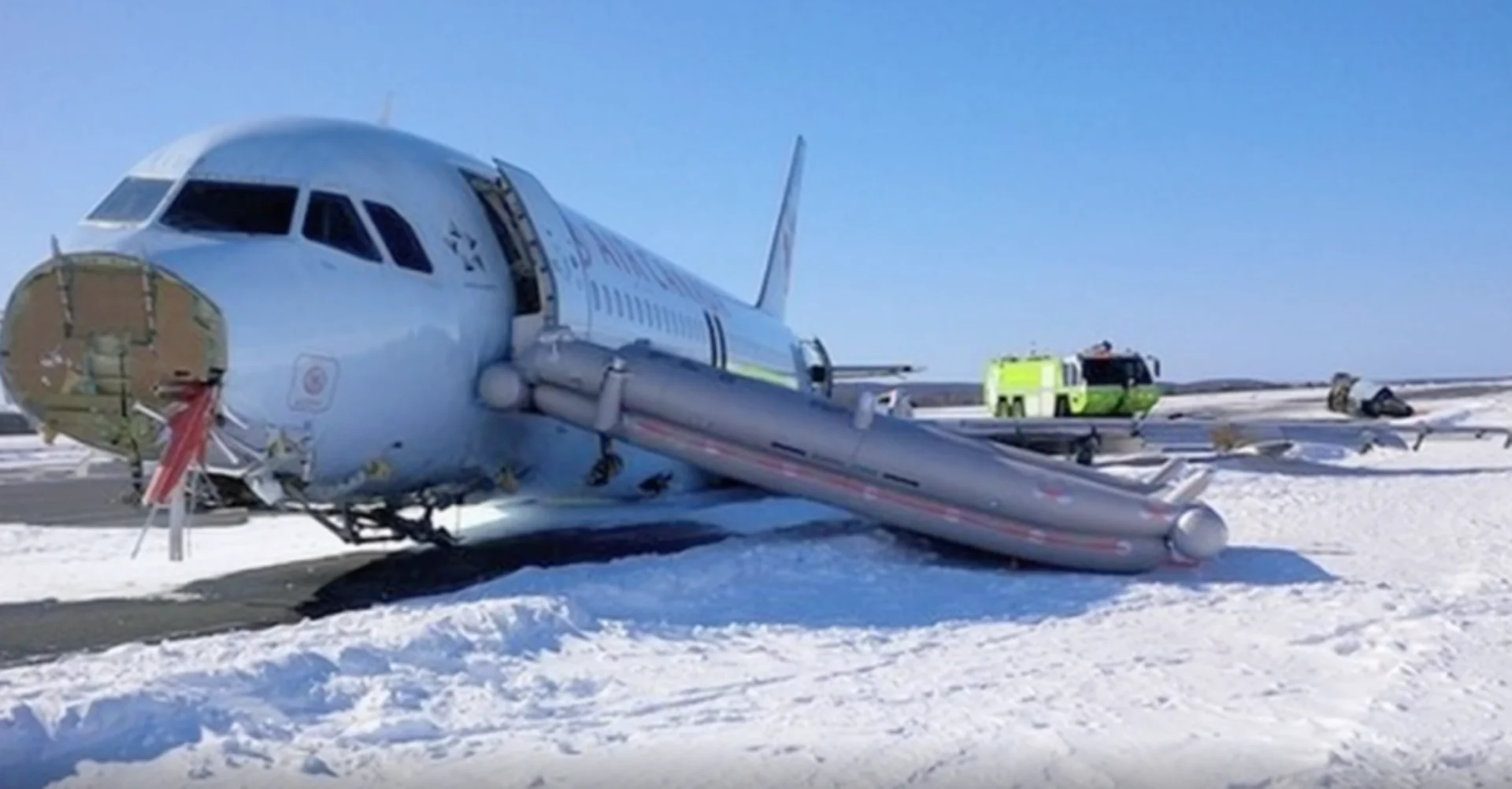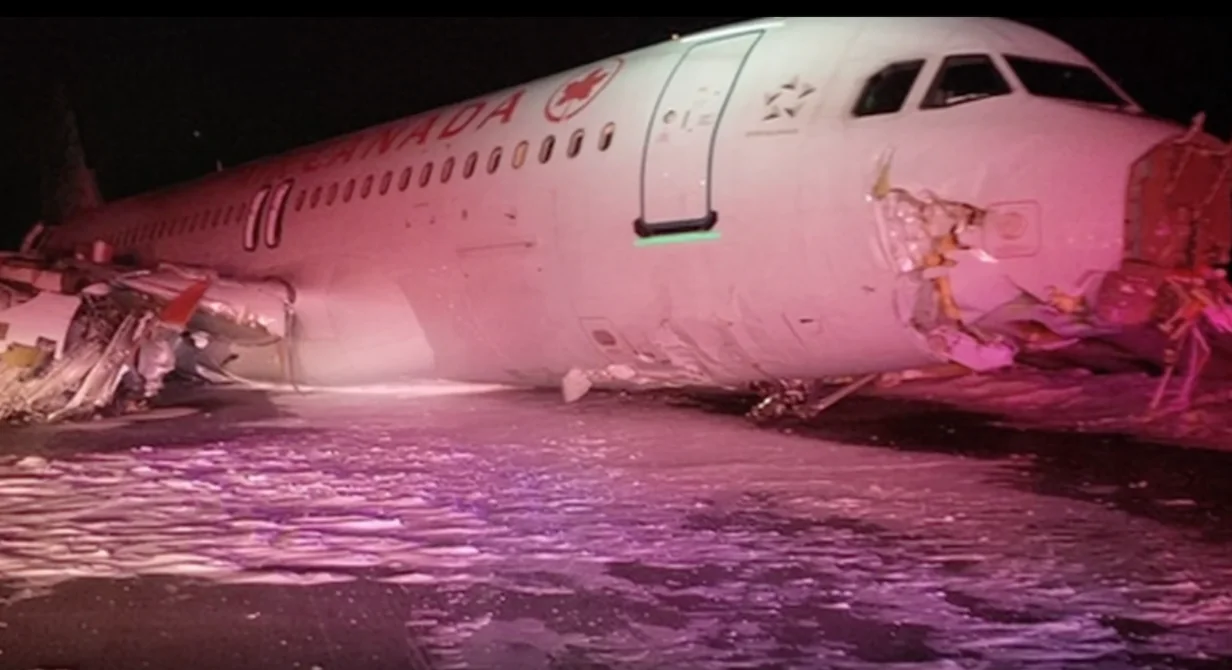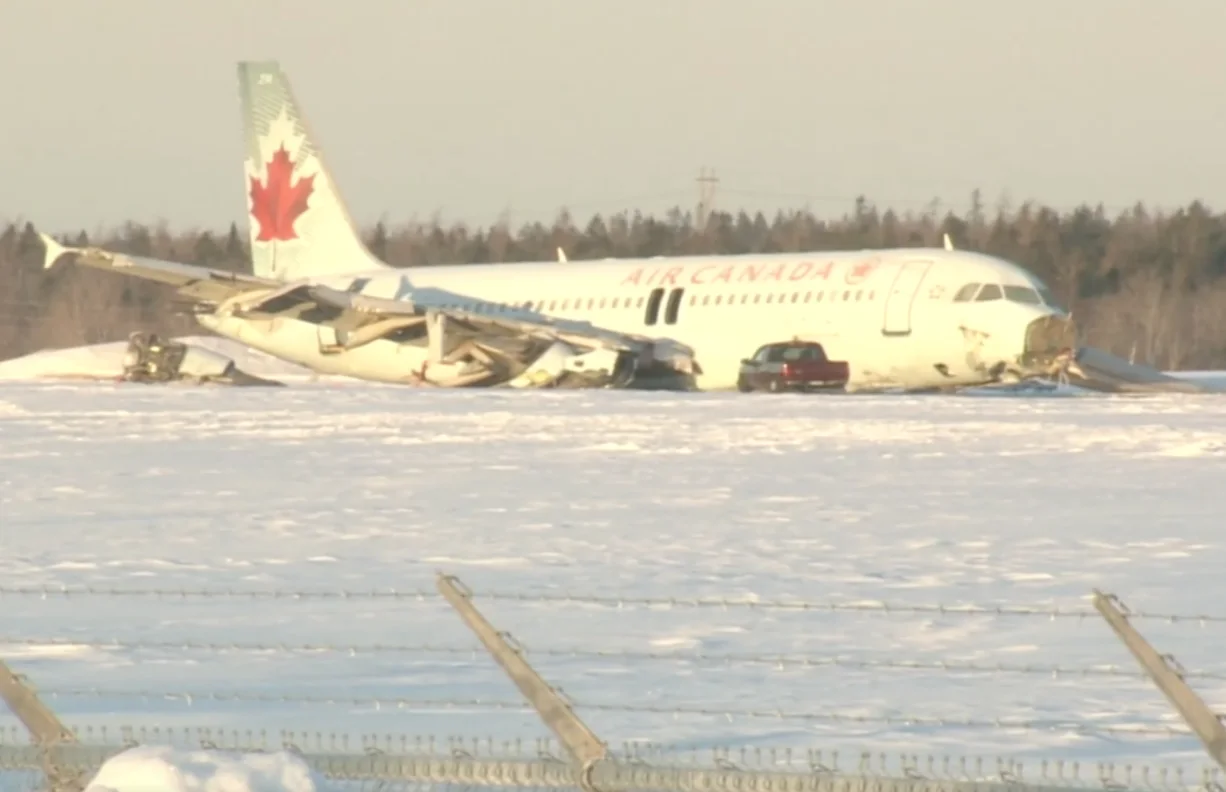
When an Air Canada flight missed the runway and caused a power outage
On this day in weather history, an Air Canada plane was damaged after landing off the runway.
This Day In Weather History is a daily podcast by Chris Mei from The Weather Network, featuring stories about people, communities and events and how weather impacted them.
--
On Mar. 29, 2015, Air Canada Flight 624 landed off the runway. The Air Canada Airbus A320-211 was travelling from Toronto Pearson International Airport to Halifax Stanfield International Airport. It was snowy and visibility was low, but "the weather" wasn't the isolated cause of the incident.

Courtesy of CBC
As the Airbus A320 was landing, it missed the runway by 225 metres and crashed through an instrument landing system localizer (an indicator that shows where planes should land). The impact into this structure caused the aircraft's landing gear to separate.
The aircraft also crashed into a power line, which cut the power to the airport. The airport was without electricity for about an hour and a half.
Click here to subscribe to This Day in Weather History
The plane lost all of its landing gear and its left engine. Other areas of the aircraft were damaged too, like the wings and tailplane.
The plane was carrying 133 passengers, three flight attendants, and two pilots. Twenty-three passengers, one flight attendant, and both pilots were taken to the hospital, but there weren't any life-threatening injuries.

Courtesy of Nathan Coleman
The Transportation Safety Board of Canada investigated the incident and released the final report on May 2017. The report indicated that there weren't any mechanical faults and the cause of the crash was pilot error.
The crew followed Air Canada's flying procedures which contradicted Airbus and pilot training instructions. Air Canada's standard procedure when selecting landing mode was over-reliant on the Airbus' automation. The autopilot opted for a steep vertical angle flight path, which was incorrect, and the pilot and first officer failed to adjust the selection. Also, the pilots could not see their surroundings as there was very limited visibility.
Since the incident, Air Canada has corrected its Airbus A320-200 Standard Operating Procedure.
Subscribe to 'This Day in Weather History': Apple Podcasts | Amazon Alexa | Google Assistant | Spotify | Google Podcasts | iHeartRadio | Overcast'
Thumbnail: Courtesy of CBC









